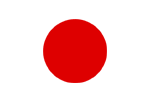過去のセミナー
<7/2023>- Date
- 7月24日(月) 14:00-
- Speaker
- 謙 塩崎(京都大学基礎物理学研究所)
- Title
- Geometric phase of matrix product states
The Berry curvature is a geometric quantity that underlies parameter-dependent quantum mechanics. Recently, the concept of a higher dimensional generalization of the Berry curvature, known as the higher Berry curvature, has been discussed [1]. In d-spatial dimensions, the higher Berry curvature is proposed as a (d+2)-form that is defined for short-range entangled states. Providing a computationally feasible method for calculating the higher Berry curvature for a given short-range entangled state is a significant challenge. In our recent work [2], we propose an explicit method to compute the higher Berry curvature for a given translationally invariant matrix product state. This method is computationally applicable for any gapped Hamiltonian in 1D. Our demonstration showed that summing up all the higher Berry fluxes across tetrahedra results in a nontrivial integer associated with the 3rd cohomology H^3(X,Z).
[1] A. Kapustin and L. Spodyneiko, Higher-dimensional generalizations of berry curvature, Phys. Rev. B 101, 235130 (2020).
[2] KS, Niclas Heinsdorf, Shuhei Ohyama, Higher Berry curvature from matrix product states, arXiv:2305.08109.
<6/2023>- Date
- 6月12日(月) 14:00-
- Speaker
- 鄭 従真(大阪大学基礎工学研究科)
- Title
- Topological crystalline superconductivity in UTe2
Superconducting phenomena in the heavy fermion system UTe2 have attracted much attention [1][2]. This superconductivity exhibits a huge upper critical field along all directions and a tiny decrease of NMR Knight-shift below Tc. These suggest that the Cooper pairs in this superconductivity are spin-triplet pairs. Spin-triplet superconductors have been actively studied because they exhibit unique superconducting phenomena due to the degrees of freedom of spin, and superconductivity in UTe2 is thought to be related to multiple orbitals and to exhibit even more unique superconductivity. In addition, since spin-triplet superconductors are strong candidates for topological superconductors, UTe2 may provide a ideal platform for studying topological properties. Fundamental elements in understanding topological superconducting phenomena are the symmetry of Cooper pairs and the electronic states forming Cooper pairs. The symmetry of Cooper pairs in UTe2 has been investigated by various experiments, including measurements of low-energy excitations of superconducting quasiparticles and spin measurements of Cooper pairs using NMR. However, each experiment has produced different claims, and a clear conclusion has yet to be reached. Regarding the electronic states, recent measurements of the de Haas-Van Alphen effect have reported that UTe2 possesses cylindrical electron and hole Fermi surfaces [3]. In three- dimensional time-reversal symmetric superconductors with cylindrical Fermi surfaces, it is generally known that the topological invariant is trivial. In such cases, considering alternative topological invariants using crystal symmetry becomes effective, leaving the possibility of realizing a topological crystalline superconducting state in UTe2 [4]. In this seminar, I will begin by summarizing recent experimental findings on the superconducting state of UTe2 and then proceed to explain the topological crystalline superconducting state in UTe2.
[1] S. Ran, et al., Science 365 684 (2019).
[2] D. Aoki, et al., J. Phys.: Condens. Matter 34, 243002 (2022).
[3] D. Aoki, et al., J. Phys. Soc. Jpn. 91 083704 (2022).
[4] J. Tei, et al., Phys. Rev. B 107 144517 (2023).
<5/2023>- Date
- 5月8日(月) 14:30-
- Speaker
- 大橋 良伊(大阪大学基礎工学研究科)
- Title
- 分数量子ホール系の変遷と観測
半導体ヘテロ構造やグラフェンなどの2次元電子系に対し、強磁場を印加することで、ホール電導度が分数に量子化する分数量子ホール状態が実現される[1]。分数量子ホール効果の物質内では非圧縮性量子液体が実現し、その素励起は分数統計、分数電荷をもつという奇妙な性質を示すことが知られている。これらの分数値は充填率$\nu$によって定まっている。 充填率が奇数分母となる分数量子ホール状態は、Laughlinによって近似的な波動関数が導入され[2]、非圧縮性量子液体の特性、Chern-Simon理論、エニオン励起などの理論舞台の発展が進んだ。 一方、実験観測においては充填率が偶数分母の分数量子ホール状態も観測されていた。理論的には、Moore-Read(Pfaffian)状態[3]、Halperin?Lee?Read状態など、偶数分母の充填率での分数量子ホール状態を実現する模型が提案されており、特にMoore-Read状態における素励起には、非可換統計性をもつイジングエニオンの存在が期待されている。 分数量子ホール系の性質である、分数電荷・分数統計の観測を試みた実験が、今日まで盛んに行われている。例えば、ポイントコンタクト間のショットノイズによる分数電荷の測定、量子干渉計におけるエニオンの干渉効果、エニオンの衝突による分数統計角の観測などである。 本セミナーではこれらの分数量子ホール系の奇妙な性質や、その特性を観測するための昨今の実験について概要を整理する。またPfaffian状態について、ヘテロ接合におけるポイントコンタクトにおけるAndreev的反射の存在を提唱した発表者の研究を紹介する。[4]
[1] D. C. Tsui, H. L. Stormer and A. C. Gossard, Phys. Rev. Lett., 48, 1559 (1982)
[2] R. B. Laughlin, Phys. Rev. Lett. 50 1395 (1983)
[3] G. Moore and N. Read, Nucl. Phys. B 360 362 (1991)
[4] RO, R. Nakai, T. Yokoyama, Y. Tanaka and K. Nomura, J. Phys. Soc. Jpn., 91 123703 (2022)
<4/2023>- Date
- 4月27日(木) 15:10-
- Speaker
- S. A. Nikolaev(大阪大学基礎工学研究科)
- Title
- Exploring electronic correlations in real materials by combining DFT and many-body methods
Materials where electrons are strongly correlated by Coulomb interactions reveal various fascinating phenomena, such as unconventional superconductivity, charge density order, and quantum magnetism. Electronic correlations generally constitute a many-body problem, and their proper theoretical description in real materials can become a formidable task. Being at the core of modern computational chemistry and materials science, density functional theory is often unable to provide a satisfactory description of strongly correlated materials but can still serve as a good starting point to go beyond conventional approaches. Electronic and magnetic properties of strongly correlated materials can typically be described by a limited number of states located near the Fermi level and well isolated from the rest of the electronic spectrum. This feature opens a formal way for combining ab-initio methods with the modern many-body machinery, allowing us to capture all relevant effects within a single electronic model and provide a transparent physical picture for the low-energy properties of strongly correlated materials. In this seminar, I will outline general aspects of constructing Hubbard-like electronic models based on first-principles calculations. This so-called approach of realistic modelling will be illustrated on a series of examples including multiferroics, spin-orbit Mott insulators, and low-dimensional quantum magnets.
[1] S. A. Nikolaev, I. V. Solovyev, A. N. Ignatenko, V. Yu. Irkhin, S. V. Streltsov, Phys. Rev. B 98, 201106(R) (2018).
[2] S. A. Nikolaev and I. V. Solovyev, Phys. Rev. B 99, 100401(R) (2019).
[3] S. A. Nikolaev, I. V. Solovyev, S. V. Streltsov, npj Quantum Materials 6, 25 (2021).
- Date
- 4月26日(水) 13:00-
- Speaker
- Dr. Jorge Cayao (Senior Researcher, Uppsala University)
- Title
- Detecting Majorana bound states in semiconductor-superconductor Josephson junctions
Semiconductor-superconductor junctions represent one of the most promising platforms for realizing topological superconductivity and Majorana bound states. However, these systems also host topologically trivial zero-energy states that often exhibit properties similar as those of Majorana modes. In this talk I will show some examples where trivial zero-energy states appear and will also discuss how Majorana bound states can be detected in phase-biased Josephson junctions. In particular, I will show that supercurrents and critical currents reveal unique information of spatial non-locality, a property that can be solely attributed to Majorana bound states. Thus, the Josephson effect offers a powerful route for unambiguously probing Majorana bound states beyond standard tunnel spectroscopy experiments.
<3/2023>- Date
- 3月10日(金) 13:30-
- Speaker
- Zebin Qiu(東京大学大学院理学系研究科)
- Title
- Chiral Torsional Effect and other assorted chiral phenomena
In the wake of studies on the chiral magnetic effect, multiple kindred chiral transport phenomena have been revealed, highlighting the relation to the underlying chiral anomaly. Instead of a magnetic field, we consider a rather novel probe of the spacetime torsion, i.e., the anti-symmetric part of the affine connection, and study the current driven by torsion known as the chiral torsional effect (CTE). We generalized the calculation of CTE to finite temperature, density, and curvature in torsional gravity theory. Our results substantiate the relation between the CTE and the Nieh-Yan anomaly. Also analyzed is the interplay between torsion and external electromagnetic fields, whose result is analogous to the axion electrodynamics that effectively captures several chiral transport phenomena.
[1] Phys. Rev. D 102, 016001 (2022).
[2] ArXiv: 2004.11899.

